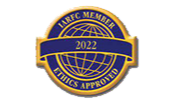5 Ways to Achieve a Happy Retirement
June 17, 2024
Securing retirement happiness requires fighting against financial tunnel vision. While having a comfortable financial cushion is important, it’s just one piece of the puzzle, not the ultimate destination.
Many Americans harbor ambitious aspirations for their retirement, with the average worker now aiming for $1.46 million to retire comfortably — a significant 53% increase from their savings target in 2020.
Your golden years open doors to new opportunities, and cherished quality time with loved ones. Yet, for those nearing the retirement stage, providing financial stability throughout their post-career phase is paramount to sustaining a fulfilling and stress-free lifestyle. In this blog, we will explore five strategies to help you achieve a happy and secure retirement. Here’s what you need to know.
1. Keeping Your Portfolio Diversified 
One of the key principles of having a secure retirement is to have a diversified portfolio. Spreading your investments across various asset classes can help mitigate risks and enhance returns. One reason why most fiduciary advisors suggest diversification is because it helps reduce your chances of risk. When it comes to investing, some risk will always be involved. However, having different types of investments can help grow your money without destroying your financial future if one investment turns out poorly. Consider the following to help keep your portfolio diversified:
- Stocks: Continue to hold a portion of your portfolio in equities to benefit from growth potential.
- Bonds: Allocate funds to bonds for stability and income generation.
- Real Estate: Invest in income-producing properties for regular cash flow and potential appreciation.
- Alternative Investments: Explore options like private equity, hedge funds, or commodities for added diversification.
Consider working with a fiduciary advisor, as they can also help tailor your investment strategy to your risk tolerance and retirement goals.
2. Establish a Withdrawal Strategy
A well-thought-out withdrawal strategy is vital to help ensure your money lasts throughout retirement. This involves determining how much to withdraw from your retirement accounts each year without depleting your savings too quickly. It’s crucial to assess your annual expenses and withdraw funds accordingly. This personalized approach helps ensure that your retirement income aligns closely with your actual spending requirements, optimizing the use of your savings. Other common withdrawal strategies include:
- Strategic Asset Allocation: Instead of focusing solely on asset class diversification, prioritize strategic asset allocation within each asset class. This involves allocating assets based on their correlation with market conditions and each other, optimizing portfolio performance while helping manage risk effectively.
- Don’t Forget About RMDs: Be aware of and plan for required minimum distributions (RMDs) if you have tax-deferred retirement accounts such as traditional IRAs or 401(k)s. Failing to take RMDs can result in substantial tax penalties, so it’s crucial to incorporate them into your withdrawal plan.
Consulting with a fiduciary advisor can help you develop a sustainable withdrawal plan that aligns with your lifestyle and longevity expectations.
 3. Plan for Healthcare Costs
3. Plan for Healthcare Costs
Healthcare can be one of the most significant expenses in retirement. Assessing your current health and healthcare needs is a crucial initial step when planning for predicted costs in retirement. This process involves taking stock of your current well-being, as well as anticipating potential health issues in the future. Here are some factors to consider:
- Evaluate Your Current Health Status: Consider factors such as your overall physical fitness, existing medical conditions, family genetic disorders, and general well-being. Understanding your health status and potential issues down the road provides a baseline for future planning.
- Medical History: Take note of any surgeries, hospitalizations, or significant health events you have experienced. A clear understanding of your medical history can help you anticipate potential health issues or complications that may arise as you age.
- Chronic Conditions: If you have any chronic health conditions, assess their severity and the ongoing treatment they require. Chronic conditions often demand regular doctor visits, medications, and special care, all of which can significantly impact your healthcare expenses in retirement.
- Lifestyle Factors: Consider your lifestyle choices, such as diet, exercise, and stress management. As you age, these factors can substantially affect your overall health and healthcare needs.
By assessing your past, present, and potential future health and healthcare needs, you can be better prepared to help make informed decisions about your healthcare budget. It’s essential to periodically revisit and adjust your healthcare plan as your circumstances change.
4. Consider Legacy Planning 
Legacy planning is essential for helping ensure the longevity of your wealth, both during your lifetime and after your passing. It involves strategizing how your assets will be distributed, leaving behind a lasting impact that can inspire positive change in the world. As you map out your retirement and contemplate the legacy you wish to leave, remember that every contribution, regardless of size, holds significant potential. Key steps to consider include:
- Communicate Your Intentions: Discuss your legacy plans with your loved ones to help ensure clarity and transparency. Sharing your values and intentions can help prevent misunderstandings and promote family harmony.
- Consider Charitable Giving: Explore opportunities for philanthropy that align with your interests and values. Whether through direct donations, establishing a charitable foundation, or contributing to a donor-advised fund, charitable giving can impact causes you care about.
- Maximize Tax Efficiency: Take advantage of tax-efficient strategies to minimize taxes on your estate and maximize the amount passed on to your beneficiaries. This may involve strategic gifting, charitable giving, and leveraging tax-advantaged accounts or trusts.
- Review and Update Regularly: Life circumstances and tax laws can change over time, so it’s important to review and update your legacy plan periodically. Be sure to revisit your plan after significant life events, such as divorce, the birth of grandchildren, or changes in financial circumstances.
Legacy planning not only provides peace of mind but also helps you to make a positive impact on future generations and your community.
5. Health Over Wealth
What good is money if you can’t enjoy it? Good health is one of the most important ingredients for a happy retirement lifestyle. Studies show that exercise and a healthy diet can reduce the risk of developing certain health conditions, increase energy levels, boost your immune system, and improve your mental health.
Furthermore, research shows that even those who become physically active and adopt a healthy diet later in life dramatically lower the risk of cardiovascular illnesses and have a lower death rate than their peers. The Centers for Disease Control and Prevention recommends about 150 to 300 minutes of moderate-intensity physical activity a week.
Excellent health is essential to live a happy life. If you want to stay comfortable in your retirement, it’s time to start taking care of your health regularly, taking care of your diet, and maintaining a good sleep routine.
Even if you think you’re in good shape, prevention is always better than cure. Therefore, always schedule regular health check-ups to see how your health truly is.
And don’t forget about mental health. When you enter your retirement period, you have time to take up that new hobby you always dreamed of, helping you stay active, productive, and connected to others. In addition to being prone to common diseases for the elderly, such as high blood pressure, heart disease, and others, socializing and taking up a new interest can help prevent depression and further cognitive decline.
Work With a Fiduciary Advisor
Teaming up with a fiduciary advisor is paramount when planning for your golden years and helping avoid major pitfalls. Fiduciaries can be pivotal in helping you streamline the planning process. By working alongside a fiduciary advisor, you can embark on a journey to develop a comprehensive income plan, covering crucial factors such as:
At Agemy Financial Strategies, our fiduciary advisors are committed to partnering with you to craft the most effective retirement plan. We tirelessly work to construct a dependable income stream that remains resilient in the face of market fluctuations, helping you relish your envisioned lifestyle. With our experience and tailored guidance, you can navigate the intricacies of retirement income planning with assurance of your financial future.
Final Thoughts
Achieving a happy and financially secure retirement involves careful planning and ongoing management of your wealth and health. At Agemy Financial Strategies, we value the opportunity to get to know you and your situation so that we can create a sustainable plan specifically tailored to you and your goals.
Our mission is to guide our clients, whether they are in the midst of retirement planning or preparing to embark on this new chapter. As fiduciary advisors, we advocate for your best interests and tailor solutions to meet your unique preferences and requirements.
Contact us here today to set up your complimentary strategy session.







Leave a Reply
Want to join the discussion?Feel free to contribute!